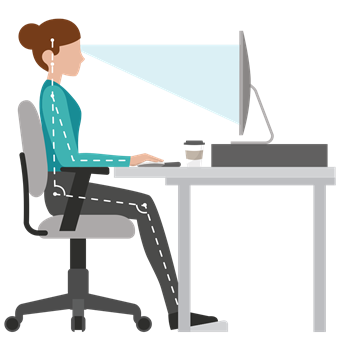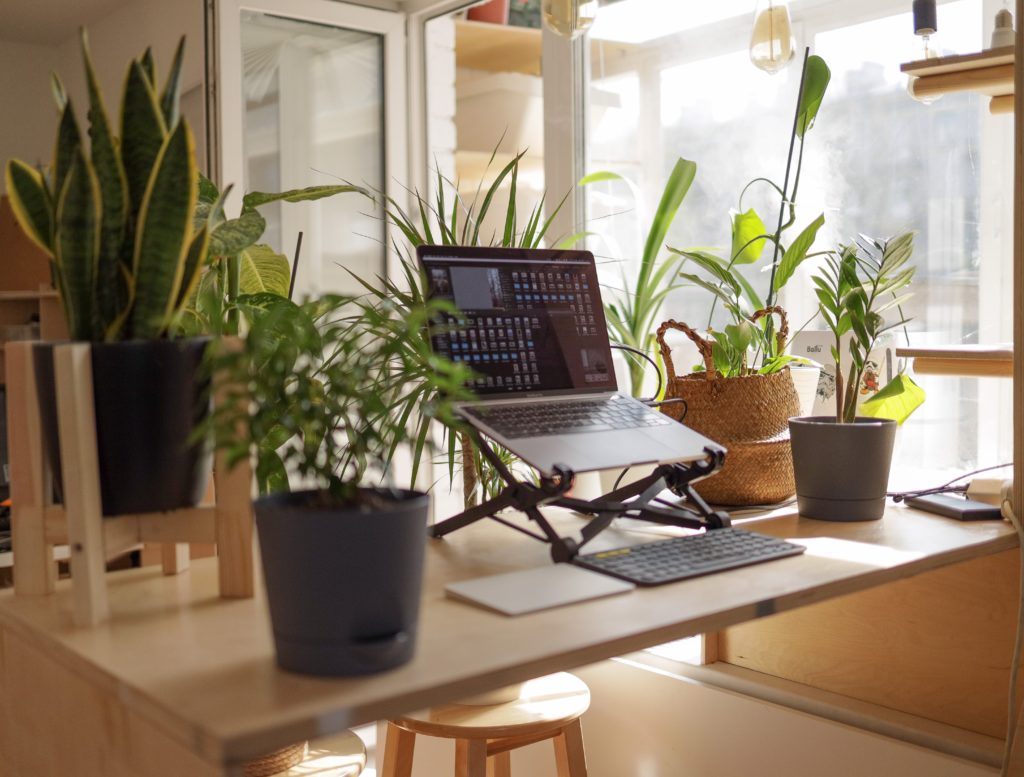In 2020, the number of people working and studying remotely has spiked significantly. There are a lot of perks to working remotely, such as more flexible hours, reduced transit time, and the ability to spend more time with your family. However, some people working from home may be sitting more due to working longer and harder. Additionally, the invasive nature of remove working may cause higher levels of stress and anxiety.
Sitting more, doing less
The World Health Organization (WHO) estimates that 31% of individuals over the age of 15 are physically inactive, meaning that they do not meet the recommendation of 150 minutes or more of moderate intensity physical activity per week9. However, not everybody has access to the same material and non-material resources (income, health values, equipment to exercise at home) to achieve the guidelines for physical activity. Meeting the guidelines for physical activity may be the last priority for some people – especially during the covid-19 pandemic.
The idea of 150 minutes of moderate to vigorous exercise weekly may seem impossible given some people’s social reality. We suggest trying to move a little bit more everyday. Engaging in any type of movement for 10 minutes, 3 times a day4 may seem more realistic. Studies have shown that 3 bouts of 10 minutes of moderate to vigorous exercise at any time throughout the day can significantly decrease some of the adverse effects that may arise from sitting for long periods of time3. If 3 bouts of 10 minutes does not seem realistic to you, any movement at any intensity, and duration throughout the day is better than none6 (e.g., vacuuming, cooking, taking the stairs).
Hurting from Head to Toe?
Do your eyes hurt? What about your neck? How about your back? Are you feeling sore all over? Are you suddenly getting headaches?
The way your workstation is set up may play a role in how you are feeling. Many people may not be able to have an ergonomically adjusted workstation at home, and as a result suffer from a number of problems ranging from eye strain, neck to lower back pain, or wrist pain. However, fear not! According to the Canadian Center for Occupation Health and Safety (CCOHS), there are small changes you can make to your workplace and simple habits you can adopt to help prevent all these aches and pains.
Tricks for Less Pain when Working from Home
- Lift the monitor to eye level and at an arm’s length: Prevents straining the neck and eye strain.
- Get a chair with an arm rest: Supports your arms. Assure yourself that the keyboard and mouse are at elbow level to keep your hand and wrist inline. This prevents soreness of the hands and shoulders.
- Organize your work area: Keep items you use often in the “primary zone,” the area within reach (see figure). Keep items that are used less often in the secondary zone, area within reach of the outstretched arms, and items you rarely need in the tertiary zone.

- Adjust seat height: The quick way to adjust seat height is to stand in front of the adjustable chair (if you have one) and raise the seat height to your knee level.
- Grab a pillow: If you don’t have an adjustable chair, that’s alright! As much as possible try and find a chair with a back rest and place a pillow in between the chair and the lower curve of your back. Placing a pillow against your back helps support your back and maintain the natural curvature of your spine.
- Don’t forget the footrest: Again, if your chair isn’t adjustable this is a must! Your thighs should always be parallel to the floor, if you’re a shorter person, you may benefit from a footrest. Of course, a large stack of paper, or nice big book will also do the trick!
- Give your eyes a break and make sure the room is just bright enough: Place your desk or computer screen perpendicular to the windows so that the light does not directly hit the screen because glares cause both eye fatigue and dryness. Alternatively, tilting the laptop screen can also help minimize screen glare or using an anti-glare screen. Also don’t forget to take a break every 25 minutes!
- Check the thermostat: If the room is too warm or too cold you will either be too uncomfortable or get too tired. The optimal temperature to work at for men is: 21-22˚C1; while women work best at temperatures between 24-26˚C1.

Working Harder, Working Longer. How to Combat the Stress
Initially, when presented with the idea of working at home, I’m sure most of us imagined a less stressful work week, and more down time, but for many it is quite the opposite! Many students report being overworked, overwhelmed and overstressed3. This is in part due to many teachers struggling to effectively adapt the course material to the new remote format. Additionally, the home environment may be “too cozy” for some people, making it hard to work and focus.
People working from home struggle with many problems; such as familial responsibility and issues with co-habitation8. Other problems that seem to plague the home workforce relentlessly is a subconscious pressure to “keep working” as well as an extra stress from an inability to separate their work and their home environment8.
Tricks for Coping with Stress when Working from Home
- Make yourself an office8 : It’s important to separate home from work. Having your office in your room makes it difficult to separate those two spheres. If you work in your room, you may feel pressured to “stay on the grind”. That’s why it is best to have two designated areas: one for work and one for relaxation! That being said, we recognize that some people may not have the option of 2 different rooms.
- Plan, plan, plan!8 : Planning out your day is probably the best way to make sure you stay consistent. If you don’t plan your day, you may feel guilty for not doing what you perceive to be “enough” or stressed from doing too much all the time. Setting up a to-do list and designating a reasonable amount of time to each task is one way to make sure everything gets done in a stress free, efficient and effective manner.
- Don’t forget yourself 8: Increasingly, the line between work, rest and social life are being blurred. Often people choose to omit the “rest” element in favor of maintaining both their work and social life. We suggest to not forget to give yourself some time alone or else burnout may occur!
Wrap Up
Telework, and remote learning are likely here to stay for a while. It is important to learn and adapt as we go. If you would like to learn more about how you can better your home work environment the CCOHS has made a variety of their products and resources available to the public free of charge until March 31, 2021!
References
- Chang, T. Y., & Kajackaite, A. (2019). Battle for the thermostat: Gender and the effect of temperature on cognitive performance. PloS one, 14(5), e0216362. https://doi.org/10.1371/journal.pone.0216362
- Canadain Center for Occupational Health and Safety (2017) Health and Safety Committees Reference Guide
- Hasan, N., & Bao, Y. (2020). Impact of “e-Learning crack-up” perception on psychological distress among college students during COVID-19 pandemic: A mediating role of “fear of academic year loss”. Children and youth services review, 118, 105355. https://doi.org/10.1016/j.childyouth.2020.105355
- Glazer, N. L., Lyass, A., Esliger, D. W., Blease, S. J., Freedson, P. S., Massaro, J. M., Murabito, J. M., & Vasan, R. S. (2013). Sustained and shorter bouts of physical activity are related to cardiovascular health. Medicine and science in sports and exercise, 45(1), 109–115. https://doi.org/10.1249/MSS.0b013e31826beae5
- Guthold R, Stevens GA, Riley LM, Bull FC. (2018) Worldwide trends in insufficient physical activity from 2001 to 2016: a pooled analysis of 358 population-based surveys with 1·9 million participants. Lancet Glob Health;6(10):e1077-e1086.
- Hall, G., Laddu, D. R., Phillips, S. A., Lavie, C. J., & Arena, R. (2020). A tale of two pandemics: How will COVID-19 and global trends in physical inactivity and sedentary behavior affect one another?. Progress in cardiovascular diseases, S00330620(20)30077-3. Advance online publication. https://doi.org/10.1016/j.pcad.2020.04.005
- Patterson R., McNamara E., Tainio M. (2018) Sedentary behaviour and risk of all-cause, cardiovascular and cancer mortality, and incident type 2 diabetes: a systematic review and dose response meta-analysis. Eur J Epidemiol. ;33(9):811–829.
- Tietze, Susanne. (2002). When “Work” Comes “Home”: Coping Strategies of Teleworkers and their Families. Journal of Business Ethics. 41. 385-396. 10.1023/A:1021236426657.
- World Health Organization (2018) More physical activity, Retrieved from: https://www.who.int/teams/health-promotion/physical-activity
- Young D.R., Hivert M.F., Alhassan S (2016). Sedentary behavior and cardiovascular morbidity and mortality: a science advisory from the American Heart Association. Circulation. ;134(13):e262–e279





